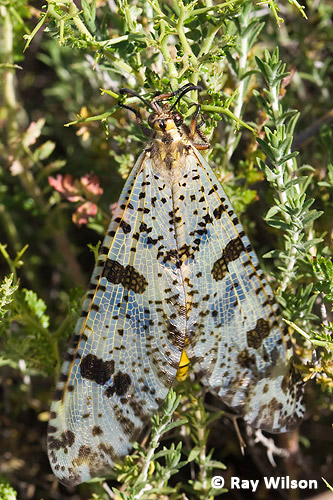
Myrmeleontidae
Antlions
Only one species of antlion occurs in Britain (not illustrated) at a few sandy sites in Suffolk. Several other species do, however, occur in Europe, especially in the south. These insects get their name from the predatory habits of their larvae which construct a steeply sloped pit in sandy locations and bury themselves at the bottom of it with only their large, powerful jaws exposed. Ants, and other small insects, that fall into the pit are unable to climb out of the trap and are quickly killed by the antlion larva.
 |
 |
Palpares libelluloides - Lesvos, Greece - May 2006
Adult antlions can easily be mistaken for dragonflies or damselflies, especially impressive species such as Palpares libelluloides, the largest of the European antlions. They can all be readily distinguished from the Odonata, however, by their thickly clubbed antennae.
Ray Wilson owns the copyright of all images on this site.
They may not be used or copied in any form without prior written permission.
raywilsonphotography@googlemail.com